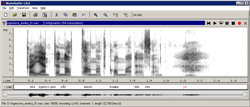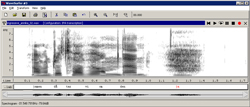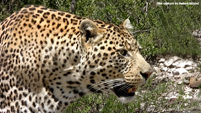The term ‘purring’ has been used liberally in the mammal vocalization literature, and an exhaustive review is
given in Peters (2002). Using a definition of purring that continuous sound production must alternate between
pulmonic egressive and ingressive airstream (and usually go on for minutes), Peters (2002) reached the conclusion that
until then only ‘purring cats’ (Felidae) and two species of genets (Viverridae sensu stricto), Genetta tigrina,
and most likely also Genetta genetta, had been documented to purr.
The subdivision of the Felidae, the cat family, into ‘purring cats’ on the one hand, and ‘roaring cats ’
(i.e. non-purring) on the other, originally goes back to Owen (1834/1835) and was definitely introduced by Pocock (1916),
based on a difference in hyoid anatomy. The ‘roaring cats’ (lion, Panthera leo; tiger, P. tigris; jaguar,
P. onca; leopard, P. pardus) have an incompletely ossified hyoid, which, according to this conception, enables
them to roar but not to purr. On the other hand, the snow leopard (Uncia uncia, or P. uncia), as the fifth felid
species with an incompletely ossified hyoid, purrs (Hemmer, 1972). All remaining species of the family Felidae (‘purring
cats’) have a completely ossified hyoid which enables them to purr but not to roar.
However, there is no well-founded and unequivocal basis for a classification of the species in the family Felidae according to the
absence/presence of purring and roaring, respectively, and differences in hyoid anatomy. Weissengruber et al. (2002) decidedly
argued that the ability of a cat species to purr is not affected by the anatomy of its hyoid, i.e. whether it is fully ossified or has
a ligamentous epihyoid, and that, based on a technical acoustic definition of roaring, the presence of this vocalization type depends
on specific characteristics of the vocal folds and an elongated vocal tract, the latter rendered possible by an incompletely ossified hyoid.
The current classification of the Felidae is based on molecular characteristics (Johnson et al., 2006; O’Brien &
Johnson, 2007) and groups the clouded leopards (Neofelis nebulosa and N. diardi) – with completely
ossified hyoids – together with the five cat species in which it is incompletely ossified.
|















